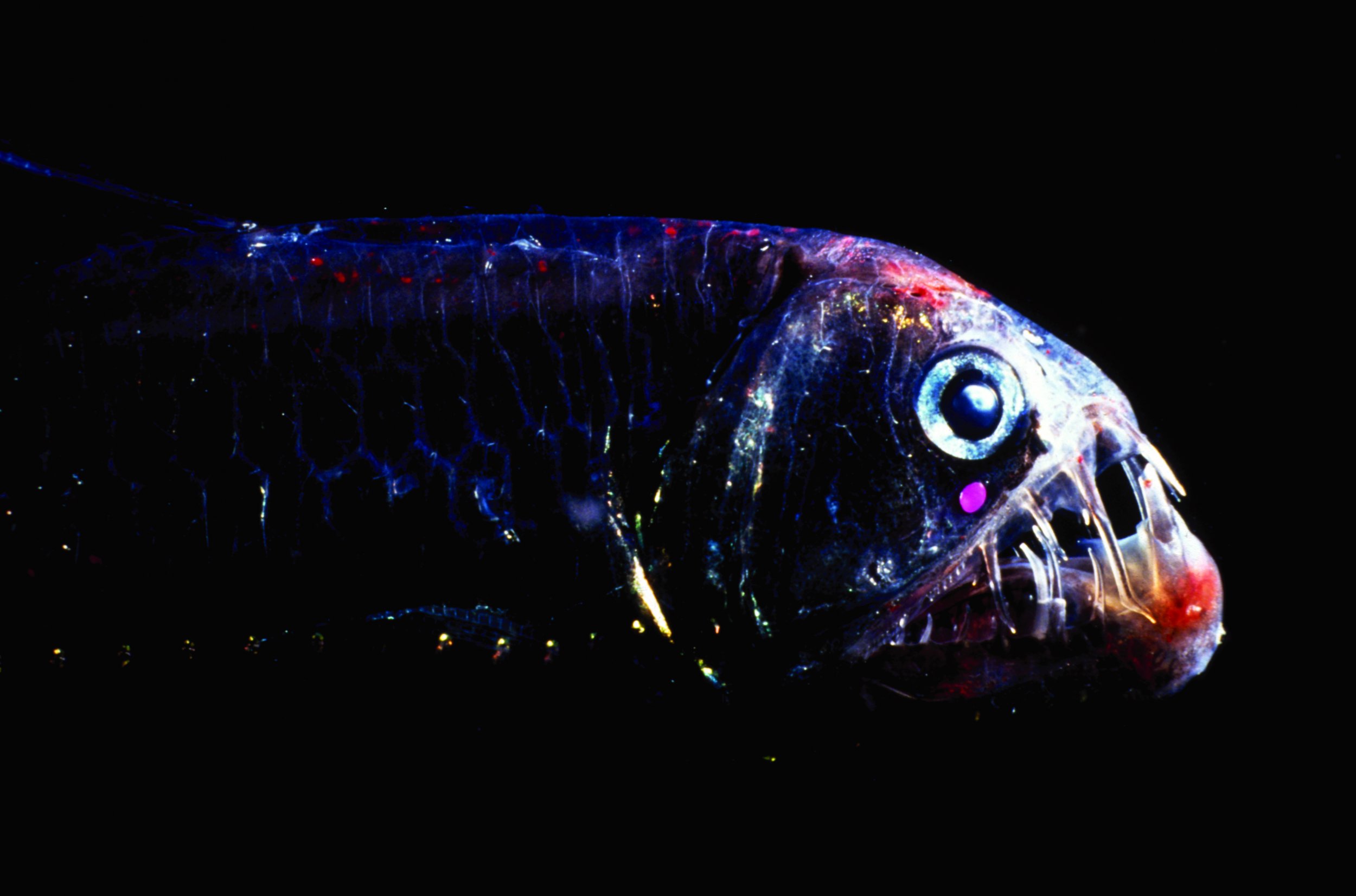
The eyes of little-understood fish that lurks in the barely-lit deep sea have evolved to see in color, scientists believe.
The work, published in the journal Science, calls into question past studies that suggest these animals who live between 2,000 to 27,5000 feet beneath the ocean surface are colorblind.
Deep-sea fish inhabit environments where bioluminescence given off by creatures and dim, residual sunlight cast into the upper 3,000 feet of the ocean are their only sources of light.
An international team of scientists looked at the genomes of 101 fish to find out more about their opsins: the receptors in the retina that turn light into electrochemical signals processed by the brain.
Vertebrates, or animals with backbones, have up to five opsins: a single rod opsin to see in the dark and four cones to detect color from brightly lit objects. Humans have three cone opsins; cats and dogs have two; while many fish and birds have four.
By looking at the fish genomes, the researchers found that some deep-sea fish have a multi-rod opsin-based visual system that likely enables them to see color in the inky depths of the ocean.
This visual system could be useful for picking up bioluminescent light from predators or prey, but only behavioral tests could confirm this.
The glacier lanternfish, the tube-eye, the longwing spinyfin and the silver spinyfin were found to have at least five rod opsins. The work also revealed many fish have more opsin genes than they are using.
Professor Walter Salzburger, study co-author and an expert in the evolution of animals at Switzerland's University of Basel Zoological Institute, told Newsweek: "Multiple rod-opsin based visual systems have evolved at least three times independently in deep-sea fishes, which indicates that it might indeed be very useful to have more than one rod pigment when living down there. Overall, our study shows that, within the constraint of a vertebrate eye, there is a much greater possibility for adaptations than previously thought, including the potential for a color detection."
But as it is currently not possible to run behavioral experiments on deep-sea fish—because of the inaccesibility of their habitats—the team couldn't prove that the creatures can distinguish between colors in their native environment, study co-author Dr. Zuzana Musilova of the Zoological Institute and Department of Zoology at Prague's Charles University told Newsweek.
"We have also been limited in the number of deep-sea fishes that we were able to analyze. These fishes are hard to collect, not least because there are not that many scientific deep-sea cruises, and many of these species are rare. In the end, the saying that we know more about space than the deep sea is definitely true. But on the other hand, where there is much unknown there is hopefully still much learn."
Co-author Dr. Fabio Cortesi, postdoctoral research fellow at Australia's Queensland Brain Institute, told Newsweek: "Upcoming research should certainly focus on the exact functions of such a unique visual system and how the neural wiring takes place.
"Understanding how these visual systems work, how sensitive they are and how they allow these critters to survive in their extreme environment provides a treasure of knowledge that might be useful for future applications, such as in visual sensor design, camera designs or remote sensing."

Dr. Ronald Douglas, professor in optometry and visual sciences at City, University of London, who was not involved in the research, told Newsweek: "Since all light in the deep-sea is dim, deep-sea creatures have eyes 'designed' for sensitivity. The eyes, for example, have big pupils, reflective tapeta, high densities of visual pigments, and generally possess only rods which are either very long or occur in multiple banks.
He continued: "My personal view is that as almost every aspect of the deep-sea eye is an adaptation to enhance sensitivity, the possession of multiple visual pigments probably serves the same function.
"Color vision is produced by comparing the output of deferentially sensitive photoreceptors. Thus, the possession of several different spectral classes of rod in deep-sea fish could theoretically allow them to see color. However, color vision usually involves inhibitory interactions, which would probably result in a loss of sensitivity, and this is at odds with all other adaptations of deep-sea vision, which serve to enhance sensitivity."
Douglas concluded: "The main joy of being a biologist is that we are continually surprised and this paper certainly did that."
Uncommon Knowledge
Newsweek is committed to challenging conventional wisdom and finding connections in the search for common ground.
Newsweek is committed to challenging conventional wisdom and finding connections in the search for common ground.
About the writer
Kashmira Gander is Deputy Science Editor at Newsweek. Her interests include health, gender, LGBTQIA+ issues, human rights, subcultures, music, and lifestyle. Her ... Read more
To read how Newsweek uses AI as a newsroom tool, Click here.





